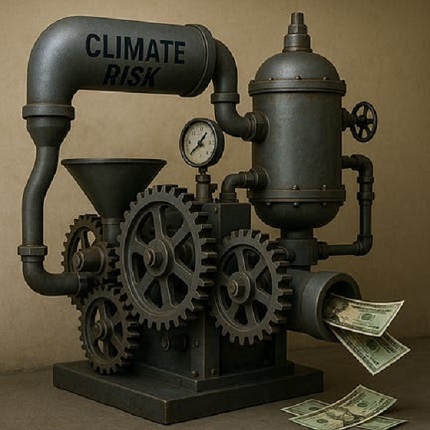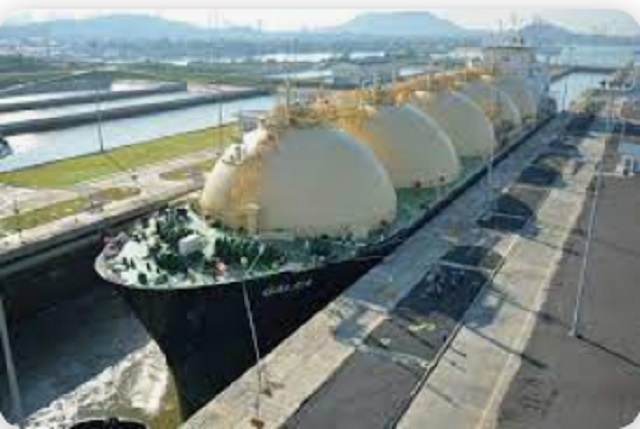Agriculture
DC-based think tank warns US gov’t failing to prioritize food security while China ramps up efforts

From LifeSiteNews
By J.M. Phelps
The Biden administration has incentivized many farmers to reprioritize the use of their land away from cultivating it for food production.
The United States government and the Chinese Communist Party see “national security” in two very different ways – and that includes food security.
Historically, the CCP has been known to weaponize its food supply, which it has done against millions of its own citizens, resulting in mass starvation and suffering. But today, it appears the communist government is stockpiling food, indeed, making it a major national security priority for its people. Why?
Tommy Waller, president and CEO of the Washington, D.C.-based think tank the Center for Security Policy, says most Americans do not understand that “food security is national security”. And that currently, the safety of American citizens is, indeed, being jeopardized by the U.S. government. The retired Marine Corps lieutenant colonel, in an interview with WND, explained that “at the federal level, our nation has catastrophically failed to prioritize food security while all of our adversaries, both hostile nations and globalists, have had their crosshairs on food for quite a while.”
For example, Waller said, in stark contrast to “having no problem starving its own people,” the Chinese government has an entire agency called the National Food and Strategic Reserves Administration. It is largely responsible for laws and regulations that oversee grain and material reserves of the East Asian country.
In statistics often touted by members of the Chinese regime, Waller said, “China’s grain inventories are so abundant that the stock-to-use ratio is well above the international grain security threshold.”
“The U. S. government has not put a major priority on food security or preparedness,” Waller warned. In contrast to the Chinese regime’s prioritizing strategic reserves of food, he told WND, “under the Biden administration, the USDA and FEMA have transitioned from a culture of preparedness to priorities of diversity, equity and inclusion – DEI – and climate change.”
What’s more, he said, the Biden administration has incentivized many farmers to reprioritize the use of their land away from cultivating it for food production. Through the Conservation Reserve Program, he explained, “farmers are getting paid more to get their land into the program as opposed to farming it.” While he conceded there are some benefits to the program, he also pointed out that farmers are producing less food as a result, and this diminishes America’s food security.
“Less than two percent of our population produces food for everybody else in this country,” Waller noted. “The average American isn’t prepared to go without food for any duration, so you can see the importance of keeping our farmers farming.”
“Take away farming and you take away food,” he said starkly, while warning that the average person is extremely unprepared for shortages of food. “They just take it for granted, and it’s understandable because we’ve always had it very easy in this country,” Waller said, but warning about one scenario in which Americans could find themselves hungry right away: “That number one scenario is a loss of electricity caused by widespread electric grid blackouts.”
Waller’s interest in food security, he said, steadily grew due to his work to secure America’s electric grid. “All of the infrastructure we have is dependent upon electricity,” he said. “When considering the second and third order effects of electric grid outages, you can see how food becomes a very significant item of importance.”
“Most Americans don’t think twice about paying for home insurance, automobile insurance, life insurance, but for whatever reason, they don’t think about food insurance,” Waller told WND. “They don’t think about stocking up.”
While the federal government may be failing to stress the importance of preparedness, Waller attests that food security “is the one area where individual people and their communities could actually enhance national security,” adding that the lack of preparedness is “a fixable problem, if we are smart about our policies and more.”
In a 41-page report, the Center for Security Policy has published recommendations to bolster food security at the federal, state, local and individual level. With little action at the federal level, he said, it is important for Americans to do what they can at the state and local, as well as individual levels.
For example, the Center, which has a 20-year track record of helping state governments shape policies to bolster national security, is actively supporting numerous lawmakers seeking to outlaw agricultural land from being owned by foreign adversaries. The security-oriented nonprofit also promotes the concept of community-supported agriculture and the importance of citizens purchasing their food from local farmers. “By helping sustain their work,” Waller told WND, “it’s going to create more resilience at the community level.”
“Everything the Center for Security Policy does is for the public interest,” Waller said. “We exist to provide uncompromised analysis, unflinching leadership and unconventional solutions to keep Americans safer,” he explained, adding that “there are no corporations behind what we are doing.” He shared that CSP can also “provide threat briefings at the county level for emergency managers and law enforcement”.
Ultimately, as Waller explained, “food security is national security, and everyone – from citizens to lawmakers – can do their part to increase both.”
Reprinted with permission from WND News Center.
Agriculture
Canada’s air quality among the best in the world

From the Fraser Institute
By Annika Segelhorst and Elmira Aliakbari
Canadians care about the environment and breathing clean air. In 2023, the share of Canadians concerned about the state of outdoor air quality was 7 in 10, according to survey results from Abacus Data. Yet Canada outperforms most comparable high-income countries on air quality, suggesting a gap between public perception and empirical reality. Overall, Canada ranks 8th for air quality among 31 high-income countries, according to our recent study published by the Fraser Institute.
A key determinant of air quality is the presence of tiny solid particles and liquid droplets floating in the air, known as particulates. The smallest of these particles, known as fine particulate matter, are especially hazardous, as they can penetrate deep into a person’s lungs, enter the blood stream and harm our health.
Exposure to fine particulate matter stems from both natural and human sources. Natural events such as wildfires, dust storms and volcanic eruptions can release particles into the air that can travel thousands of kilometres. Other sources of particulate pollution originate from human activities such as the combustion of fossil fuels in automobiles and during industrial processes.
The World Health Organization (WHO) and the Canadian Council of Ministers of the Environment (CCME) publish air quality guidelines related to health, which we used to measure and rank 31 high-income countries on air quality.
Using data from 2022 (the latest year of consistently available data), our study assessed air quality based on three measures related to particulate pollution: (1) average exposure, (2) share of the population at risk, and (3) estimated health impacts.
The first measure, average exposure, reflects the average level of outdoor particle pollution people are exposed to over a year. Among 31 high-income countries, Canadians had the 5th-lowest average exposure to particulate pollution.
Next, the study considered the proportion of each country’s population that experienced an annual average level of fine particle pollution greater than the WHO’s air quality guideline. Only 2 per cent of Canadians were exposed to fine particle pollution levels exceeding the WHO guideline for annual exposure, ranking 9th of 31 countries. In other words, 98 per cent of Canadians were not exposed to fine particulate pollution levels exceeding health guidelines.
Finally, the study reviewed estimates of illness and mortality associated with fine particle pollution in each country. Canada had the fifth-lowest estimated death and illness burden due to fine particle pollution.
Taken together, the results show that Canada stands out as a global leader on clean air, ranking 8th overall for air quality among high-income countries.
Canada’s record underscores both the progress made in achieving cleaner air and the quality of life our clean air supports.
Agriculture
Health Canada pauses plan to sell unlabeled cloned meat

From LifeSiteNews
Health Canada has indefinitely paused its plan to allow unlabeled cloned meat in grocery stores after thousands of Canadians, prominent figures, and industry leaders condemned the move.
Health Canada is pausing its plan to put unlabeled cloned meat in Canadian grocery stores, following public outcry.
In a November 19 update on its website, Health Canada announced an indefinite suspension of the decision to remove labels from cloned meat products after thousands of Canadians condemned the plan online.
“The Government of Canada has received significant input from both consumers and industry about the implications of this potential policy update,” the publication read. “The Department has therefore indefinitely paused the policy update to provide time for further discussions and consideration,” it continued, adding, “Until the policy is updated, foods made from cloned cattle and swine will remain subject to the novel food assessment.”
In late October, Health Canada quietly approved removing labels from foods derived from somatic cell nuclear transfer (SCNT) clones and their offspring. As a result, Canadians buying meat from the grocery store would have had no way of knowing if the product was cloned meat.
Many researchers have documented high rates of cloning failure, large offspring syndrome (LOS), placental abnormalities, early death, and organ defects in cloned animals. The animals are also administered heavy doses of antibiotics due to infections and immune issues.
Typically, the offspring of cloned animals, rather than the cloned animals themselves, are processed for human consumption. As a result, researchers allege that the health defects and high drug use does not affect the final product.
However, there are no comprehensive human studies on the effects of eating cloned meat, meaning that the side-effects for humans are unknown.
News of the plan spread quickly on social media, with thousands of Canadians condemning the plan and promising to switch to local meat providers.
“By authorizing the sale of meat from cloned animals without mandatory labeling or a formal public announcement, Health Canada risks repeating a familiar and costly failure in risk communication. Deeply disappointing,” food policy expert and professor at Dalhousie University Sylvain Charlebois wrote on X.
"By authorizing the sale of meat from cloned animals without mandatory labeling or a formal public announcement, Health Canada risks repeating a familiar and costly failure in risk communication. Deeply disappointing."
More on this week's Food Professor Podcast! https://t.co/UZTIcQzUN3
— The Food Professor (@FoodProfessor) October 30, 2025
Likewise, Conservative MP Leslyn Lewis warned, “Health Canada recently decided that meat from cloned animals and their offspring no longer needs a special review or any form of disclosure.”
“That means, soon you could buy beef or pork and have no idea how it was bred,” she continued. “Other countries debate this openly: the EU has considered strict labelling, and even the U.S. has admitted that cloned-offspring meat is circulating.”
“But here in Canada, the public wasn’t even told. This is about informed choice,” Lewis declared. “If government and industry don’t have to tell us when meat comes from cloned animals, then Canadians need to ask a simple, honest question: What else are we not being told?”
Health Canada recently decided that meat from cloned animals and their offspring no longer needs a special review or any form of disclosure. That means, soon you could buy beef or pork and have no idea how it was bred.
Other countries debate this openly: the EU has considered… pic.twitter.com/zCnqJOpvf3
— Dr. Leslyn Lewis (@LeslynLewis) November 14, 2025
Likewise, duBreton, a leading North American supplier of organic pork based out of Quebec, denounced the move, saying, “Canadians expect clarity, transparency, and meaningful consultation on issues that directly touch their food supply. As producers, we consider it our responsibility and believe our governing food authorities should too.”
According to a survey conducted by duBreton, 74 percent of Canadians believe that “cloned meat and genetic editing practices have no place in farm and food systems.”
-

 Business2 days ago
Business2 days agoCanada invests $34 million in Chinese drones now considered to be ‘high security risks’
-

 Great Reset2 days ago
Great Reset2 days agoSurgery Denied. Death Approved.
-

 Business2 days ago
Business2 days agoThe Climate-Risk Industrial Complex and the Manufactured Insurance Crisis
-

 Health2 days ago
Health2 days agoThe Data That Doesn’t Exist
-

 Economy2 days ago
Economy2 days agoAffordable housing out of reach everywhere in Canada
-

 Business1 day ago
Business1 day agoCanada Can Finally Profit From LNG If Ottawa Stops Dragging Its Feet
-

 Crime1 day ago
Crime1 day agoInside the Fortified Sinaloa-Linked Compound Canada Still Can’t Seize After 12 Years of Legal War
-

 National1 day ago
National1 day agoLiberal bill “targets Christians” by removing religious exemption in hate-speech law









